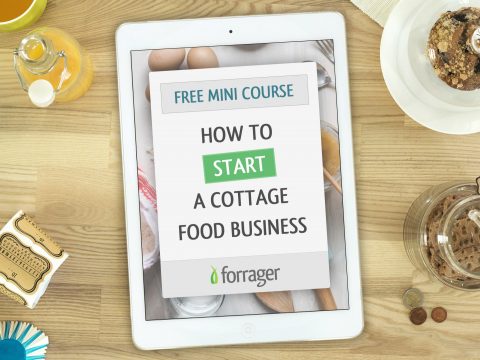Pennsylvania Can you legally sell food from home in Pennsylvania?
Cottage Food Law
Pennsylvania is a bit different than other states in that it doesn’t have laws specific to cottage food operations, but the Department of Agriculture simply allows “limited food establishments” that meet specific guidelines. The application process is lengthy, but limited food establishments have a lot of flexibility once they’re setup.
Unlike other states, in Pennsylvania, there are many similarities between the registration process for limited food establishments and other food processors. The fee to register is only $35, but the startup costs could be greater since certain types of products require lab testing. The establishment must also create a business plan and get their home inspected before getting approved. One notable restriction is that pets are not ever allowed in the parts of the home where the establishment operates.
Once they’re registered, establishments have a lot of freedom in running their business. Pennsylvania allows more types of food than most states, and it is the only state to allow meat jerky to be produced from the home. Establishments can sell anywhere they want (including interstate), and there is no limit on the amount they can sell.
Selling Where can you sell homemade food products?
Allowed Foods What food products can you sell from home?
Certain items require lab testing (mostly canned foods and drinks) — check the application for more details. Chocolate-covered fruits may only be sold if the fruit has a pH of 4.6 or below (like strawberries or apples). There are special rules and guidelines for producing honey.
Limitations How will your home food business be restricted?
Pets are ONLY allowed in your home if you can completely prevent them from accessing the parts of it where you operate your business. You cannot carry any ingredients or products through an area that pets can access, and your kitchen, storage, and prep areas must be completely shut off from them. If you can’t guarantee that your pets will be precluded from those parts of your home, then you can’t run a limited food establishment. Caged pets (birds, snakes, etc.) that are kept away from the kitchen are allowed.
Business What do you need to do to sell food from home?
To get registered, establishments must submit an application, which asks for all the types of food products that will be produced by the business. Before registering, certain products must be tested in a lab to determine their safety when left at room temperature, like jams, jellies, preserves, salsa, hot sauces, and other questionable items. In addition to testing, the establishment must also document formulas and procedures for these products, and in some cases, also include a process flow with the application. In addition to that, all limited food establishments must complete a “plan review application”. This is a written plan that includes many details about the business:
- Who supplies each ingredient
- How equipment and food will be stored
- What equipment will be used while producing the products
- What methods will be used when producing the foods, including packaging
- How the products will be transported
- What venues will be used for selling the products
- Where the goods will be sold (a list of specific locations)
Beyond the plan review, the application requires a number of other pieces of information about the business, like number of employees, working hours, tax documentation, and product labels.
After the application is submitted, an official will schedule a home inspection. Once approved, a registration fee of $35 (renewed annually) is due and the establishment can start their business.
If the kitchen’s water supply comes from a private well, it must be tested annually, which would incur an extra fee.
The approval process could take up to 60 days to complete.
Labeling How do you label cottage food products?
Chocolate Chip Cookies
Forrager Cookie Company
123 Chewy Way, Cookietown, PA 73531
Ingredients: enriched flour (wheat flour, malted barley flour, niacin, iron, thiamin mononitrate, riboflavin, folic acid), butter (cream, salt), semi-sweet chocolate (sugar, chocolate, cocoa butter, milkfat, soy lecithin, natural flavors), brown sugar, granulated sugar, eggs, vanilla extract (vanilla bean extract, alcohol, sugar), baking soda, salt (salt, calcium silicate)
Contains: milk, eggs, wheat, soy
NET WT 2 lb 4 oz (1.02 kg)
Nutritional info is necessary when shipping interstate, or when making health claims on the label (e.g. low fat, sugar free, etc). Some bakery items do not require labeling, but it must be available to the consumer if requested. Some items like this would be unpackaged items, like wedding cakes, or products sold to a restaurant and consumed on their premises. If your acidified food or drink product has a final pH level at or above 4.0, then every batch must be checked with a pH meter. Also, a log must be kept of production date, batch number, pH level, and corrective actions taken to adjust the pH level. If your acidified product has a pH level below 4.0, then you must check the pH level at least four times throughout the year. If your acidified product has a pH level above 4.4, then you need to get special approval from a Process Authority. Check the application for more details.
Workplace Are there any home kitchen requirements?
Ingredients for the business must be kept separate from those for personal use.
Resources Where can you find more information about this law?
- Job Title
- Program Specialist
- Organization
- Pennsylvania Department of Agriculture
- supyle@pa.gov
- Telephone
- 717-666-2568
Suzanne Pyle
- Job Title
- Program Specialist
- Organization
- Pennsylvania Department of Agriculture
- rhein@pa.gov
- Telephone
- (717) 787-5107
